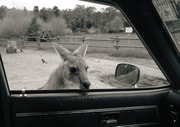S
Sean Camara
Guest
The three year 5 maths questions that adults struggle to answer — do you think you can solve them?
When we think about year 5 maths, the first few things that come to mind are lessons about basic mathematical operations and maybe a few fractions.
However, did you know that there are year 5 maths questions that have proven to be really difficult for adults?
As it turned out, there are three questions designed for 10-year-olds that leave adults scratching their heads while trying to solve them.
Are you up for the challenge of solving them yourself?
3P Learning, a mathematical software solutions company, has recently revealed the three questions that adults are struggling to answer.
Liam Kerr, the head of the company's global marketing, said that he had his team formulate maths questions for year 5 pupils to be added as sample questions for 3P Learning's program.
However, as it turned out, three specific questions have left adults scrambling while trying to answer them.
He said that the likely reason for adults that are struggling to solve the problems is their apparent disconnect with the wording of the three questions.
“They are more word play than maths questions and that’s what parents and adults get caught out on,” he quipped, pointing out that adults have a different approach for solving the problems.
Mr Kerr also revealed that students think more critically compared to adults — whose go-to approach is to tackle the questions with a strategic and methodical approach — when it comes to solving maths questions.
“They know how to approach it better because they’re seeing it more often in class,” he said.
“But these questions are about wordplay and understanding what’s being asked and getting to the chase.”
Adults and year 5 students have different approaches when it comes to solving maths questions. Credit: iStock.
So, for those of you who are curious if you can solve them, here are the questions:
1. The pencil and the pen
Stacey buys a pen and a pencil. It costs $1.20 in total. The pen costs $1 more than the pencil. How much did she pay for the pencil?
2. Ants on a cake
There is a group of ants on a giant cake. Every hour, the ant group doubles in size. If it takes 48 hours for the ants to fully cover the entire cake, how long would it take the ants to cover half the cake?
3. Three friends and the missing $1
Three friends booked a hotel room for the night. When they got to the hotel, they paid a $30 fee and went to their room. The concierge brings up their bags and gives them back $5 because the hotel was having a special discount. The three friends decided to keep $1 each and give the concierge a $2 tip.
However, when they sat down to total their expenses, they could not explain the following:
Each one of them had paid $10 for the hotel fee. Each got back $1, which meant they paid $9. They gave the concierge a $2 tip.
3 × $9 = $27
$27 + $2 = $29
What happened to the last dollar?
Source: 3P Learning
Please take the time to pause before scrolling down for the answers to see if you can get the, right!
Please don’t scroll yet until you finish solving the problems! Credit: iStock.
Answers
1. 10 cents
Explainer: If the pen costs $1.00 more than the pencil and the total is $1.20, then the pencil must cost 10 cents and the pen must cost $1.10.
2. 47 hours
Explainer: The ants would cover half the size of the cake after 47 hours. The group of ants double in size every hour. This means that at any hour, the size of ants was half the size the hour before. So if the ants cover the entire cake on the 48th hour, it means the ants covered half of the cake on the 47th hour.
3. The friends each have $1, the concierge has $2 and there is $25 remaining. So $1 + $1 + $1 + $2 + $25 = $30. If we think through how much each friend paid, it’s $8.33 not $9.00 because the payment became $25, rather than $30.
Explainer:
Mr Kerr said that while it is tempting to figure out how much money each friend paid, the key to answering this question is to track where the money is.
He explained: “This question is tricky because the intuitive approach is to think that the calculation should focus on the amount each friend paid in the end, rather than to consider where the money actually is.”
“Most people find it hard not to think this way and fall down this maths rabbit hole that if each friend paid $10, they got back $1 which equals $9 each. Altogether this is $27. If we add the $2 for the concierge, we end up with $29.”
“But, If we pause to think through how much each friend actually paid, they really paid $8.33 not $9 because the payment to the hotel became $25 post-refund, rather than the original $30."
“Then you add on the $1 they each got back from the hotel, which gives you $9.33 each – which means the friends ended up with $28 ($9.33 x 3) and an additional $2 for the concierge."
“The three friends now each have $1, the concierge has $2 and $25 is with the hotel. $1 + $1 + $1 + $2 + $25 = $30.”
Source: 3P Learning
Technically, the question is all about testing your “ordering and logic” skills rather than your arithmetic skills.
For those who are curious, we would also like to share with you this video discussing the “weird” mysteries of maths.
Credit: YouTube/SciShow
Did you have fun answering these questions? Feel free to share more maths problems in the comments section so other members of the SDC can try solving them too!





